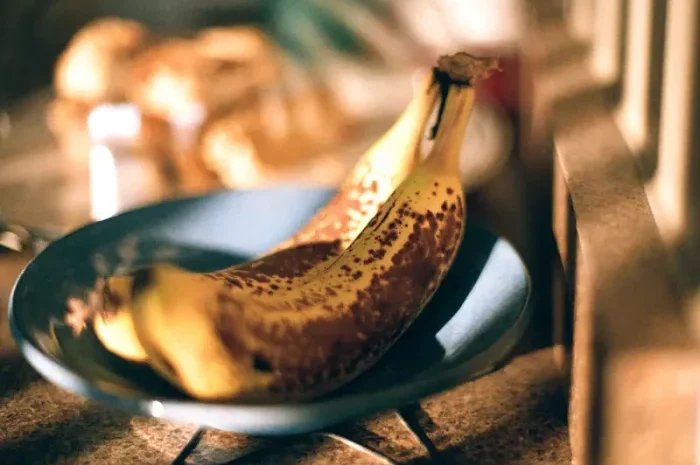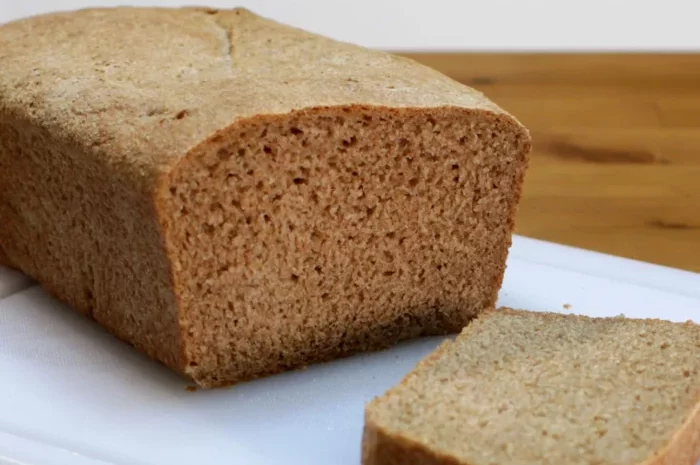Diabetes, a chronic metabolic disorder characterized by elevated blood sugar levels, affects millions of people worldwide. While medication plays a crucial role in managing diabetes, the importance of diet cannot be overstated. Dietary choices have a significant impact on blood sugar levels and overall health outcomes for individuals with diabetes. In the context of Indian cuisine, known for its rich flavors and diverse ingredients, understanding which foods are beneficial for diabetics is essential for effective management of the condition.
Importance of Diet in Managing Diabetes
Dietary management is a cornerstone of diabetes care, alongside medication, exercise, and lifestyle modifications. The foods we consume directly influence blood glucose levels, insulin sensitivity, and overall health. For individuals with diabetes, maintaining stable blood sugar levels is paramount to prevent complications such as cardiovascular disease, nerve damage, and kidney problems.
Carbohydrates, in particular, have a significant impact on blood sugar levels as they are broken down into glucose during digestion. Monitoring carbohydrate intake and choosing complex carbohydrates with a low glycemic index (GI) can help regulate blood sugar levels more effectively. Proteins and fats also play crucial roles in diabetes management, providing satiety and helping to stabilize blood sugar levels.
Nutritional Guidelines for Diabetics
A balanced diet for individuals with diabetes should focus on controlling portion sizes, monitoring carbohydrate intake, and selecting nutrient-dense foods. Here are some general guidelines:
Carbohydrates: Opt for complex carbohydrates such as whole grains (brown rice, whole wheat), legumes (lentils, chickpeas), and non-starchy vegetables (spinach, broccoli). These foods are rich in fiber, which slows down digestion and helps prevent spikes in blood sugar levels.
Proteins: Include lean sources of protein such as skinless poultry, fish, tofu, and legumes. Protein-rich foods can help stabilize blood sugar levels and promote feelings of fullness.
Fats: Choose healthy fats such as olive oil, avocado, nuts, and seeds. Limit saturated and trans fats found in processed and fried foods, as they can increase the risk of heart disease.
Fiber: Aim to include plenty of fiber-rich foods in your diet, such as fruits, vegetables, whole grains, and legumes. Fiber helps regulate blood sugar levels, improve digestion, and reduce the risk of heart disease.
Glycemic Index and Indian Foods
The glycemic index (GI) ranks foods based on their effect on blood sugar levels. Foods with a low GI are digested and absorbed more slowly, resulting in a gradual rise in blood glucose levels. In contrast, foods with a high GI cause rapid spikes in blood sugar levels. For individuals with diabetes, choosing foods with a low to moderate GI can help maintain stable blood sugar levels.
Common Indian foods and their GI values:
Basmati Rice (GI: 58): This long-grain rice has a lower GI compared to other rice varieties, making it a suitable choice for individuals with diabetes when consumed in moderation.
Chickpeas (GI: 33): Rich in protein and fiber, chickpeas have a low GI, making them an excellent option for stabilizing blood sugar levels.
Lentils (GI: 29): Lentils are a staple in Indian cuisine and have a low GI, providing a steady source of energy without causing rapid spikes in blood sugar.
Yogurt (GI: varies): Plain, unsweetened yogurt has a relatively low GI, but flavored varieties may contain added sugars, so it’s important to check the label.
Non-Starchy Vegetables: Vegetables such as spinach, cauliflower, and bitter gourd have negligible GI values and can be consumed freely by individuals with diabetes.
Best Indian Foods for Diabetics
When planning diabetic-friendly meals, focus on incorporating foods that are high in fiber, low in simple sugars, and have a low to moderate GI. Here are some Indian foods that fit the bill:
Vegetable Pulao: Made with basmati rice, mixed vegetables, and fragrant spices, vegetable pulao is a flavorful and satisfying dish with a moderate GI.
Chana Masala: This popular North Indian dish features chickpeas cooked in a spiced tomato-based sauce. It’s rich in protein, fiber, and flavor, making it an ideal choice for diabetics.
Dal Tadka: Lentils cooked with onions, tomatoes, and spices, dal tadka is a nutritious and low-GI dish that pairs well with rice or roti.
Palak Paneer: A creamy spinach curry with paneer (Indian cottage cheese), palak paneer is packed with vitamins, minerals, and antioxidants, making it a wholesome option for diabetics.
Cucumber Raita: This refreshing yogurt-based side dish is made with grated cucumber, mint, and spices. It’s low in carbohydrates and adds a cooling contrast to spicy Indian meals.
Healthy Indian Recipes
Here are two diabetic-friendly recipes that showcase the flavors and diversity of Indian cuisine:
Recipe 1: Vegetable Pulao
Ingredients:
1 cup basmati rice
1 onion, thinly sliced
1 carrot, diced
1 cup mixed vegetables (peas, bell peppers, beans)2 cloves garlic, minced
1-inch ginger, grated
1 cinnamon stick
2 cardamom pods
4 cups water or vegetable broth
Salt to taste
Fresh cilantro for garnish
Instructions:
Rinse the basmati rice under cold water until the water runs clear. Soak the rice in water for 30 minutes, then drain and set aside.
In a large skillet or pot, heat oil over medium heat. Add the sliced onions and cook until golden brown.
Add the minced garlic, grated ginger, cinnamon stick, and cardamom pods to the skillet. Cook for 1-2 minutes until fragrant.
Add the diced carrots and mixed vegetables to the skillet. Cook for 3-4 minutes until slightly tender.
Add the soaked rice to the skillet and sauté for 2-3 minutes until lightly toasted.
Pour in the water or vegetable broth and season with salt. Bring to a boil, then reduce the heat to low, cover, and simmer for 15-20 minutes until the rice is cooked through and the liquid is absorbed.
Fluff the rice with a fork and garnish with fresh cilantro before serving.
Recipe 2: Chana Masala
Ingredients:
1 cup dried chickpeas, soaked overnight
2 tablespoons oil
1 onion, finely chopped
2 tomatoes, pureed
2 cloves garlic, minced
1-inch ginger, grated
1 teaspoon cumin seeds
1 teaspoon coriander powder
1 teaspoon garam masala
1 teaspoon turmeric powder
Salt to taste
Fresh cilantro for garnish
Instructions:
Drain and rinse the soaked chickpeas. In a pressure cooker or large pot, cook the chickpeas with enough water until tender. Drain and set aside.
In a separate skillet, heat oil over medium heat. Add the cumin seeds and cook until fragrant.
Add the chopped onions to the skillet and cook until translucent.
Stir in the minced garlic and grated ginger, and cook for another 1-2 minutes.
Add the pureed tomatoes, coriander powder, garam masala, turmeric powder, and salt to the skillet. Cook until the oil separates from the masala.
Add the cooked chickpeas to the skillet and simmer for 10-15 minutes until the flavors are well combined.
Garnish with fresh cilantro before serving.
Indian Spices and Herbs for Diabetes
Indian cuisine is renowned for its use of aromatic spices and herbs, many of which offer health benefits for individuals with diabetes. Here are some spices and herbs commonly used in Indian cooking:
Turmeric: Curcumin, the active compound in turmeric, has anti-inflammatory and antioxidant properties. It may help improve insulin sensitivity and lower blood sugar levels.
Fenugreek: Fenugreek seeds are rich in soluble fiber, which can help regulate blood sugar levels and improve lipid profiles in individuals with diabetes.
Cinnamon: Cinnamon contains compounds that mimic the effects of insulin and may help lower fasting blood sugar levels in individuals with diabetes.
Ginger: Ginger has been shown to improve insulin sensitivity and reduce inflammation, making it beneficial for diabetes management.
Incorporating these spices and herbs into your meals not only enhances flavor but also offers potential health benefits for individuals with diabetes.
Meal Planning Tips
When planning diabetic-friendly meals, consider the following tips to help maintain stable blood sugar levels:
Balance your plate: Aim to fill half your plate with non-starchy vegetables, one-quarter with lean protein, and one-quarter with whole grains or starchy vegetables.
Watch portion sizes: Be mindful of portion sizes to avoid overeating, which can lead to spikes in blood sugar levels. Use smaller plates and bowls to help control portion sizes.
Eat regularly: Stick to a consistent meal schedule with evenly spaced meals and snacks throughout the day. This can help prevent blood sugar fluctuations and promote better glycemic control.
Stay hydrated: Drink plenty of water throughout the day to stay hydrated and support healthy blood sugar levels.
Limit processed foods: Minimize your intake of processed and packaged foods, which are often high in refined carbohydrates, sugars, and unhealthy fats.
Precautions and Tips
While Indian cuisine offers a wide variety of flavorful dishes, there are some precautions and tips to keep in mind when managing diabetes:
Choose cooking methods wisely: Opt for healthier cooking methods such as baking, grilling, steaming, or sautéing instead of deep-frying. This reduces the amount of added fats and calories in your meals.
Be mindful of portion sizes: Even healthy foods can contribute to elevated blood sugar levels if consumed in large quantities. Pay attention to portion sizes and avoid overeating.
Limit added sugars: Be cautious of dishes that contain added sugars, such as desserts, sweetened beverages, and sugary snacks. Choose naturally sweet foods like fruits in moderation.
Read food labels: When purchasing packaged foods, check the nutritional labels for information on carbohydrate content, sugars, and serving sizees. Choose products with lower carbohydrate and sugar content.
Experiment with spices: Use herbs and spices liberally in your cooking to enhance flavor without adding extra salt, sugar, or unhealthy fats.
Conclusion
In conclusion, managing diabetes through Indian cuisine involves making informed food choices, focusing on nutrient-dense ingredients, and incorporating spices and herbs with potential health benefits. By following a balanced and varied diet, individuals with diabetes can enjoy delicious and satisfying meals while maintaining stable blood sugar levels and promoting overall health and well-being.
Related Topics























